Related Research Articles

Limoges is a city and commune, the capital of the Haute-Vienne department and was the administrative capital of the former Limousin region in west-central France. Situated on the first western foothills of the Massif Central, Limoges is crossed by the Vienne River, of which it was originally the first ford crossing point.

Vitreous enamel, also called porcelain enamel, is a material made by fusing powdered glass to a substrate by firing, usually between 750 and 850 °C. The powder melts, flows, and then hardens to a smooth, durable vitreous coating. The word comes from the Latin vitreum, meaning "glass".

Jean Petitot was a Swiss enamel painter, who spent most of his career working for the courts of France and England.
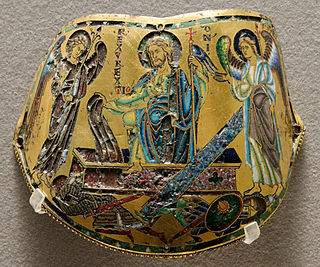
Champlevé is an enamelling technique in the decorative arts, or an object made by that process, in which troughs or cells are carved, etched, die struck, or cast into the surface of a metal object, and filled with vitreous enamel. The piece is then fired until the enamel fuses, and when cooled the surface of the object is polished. The uncarved portions of the original surface remain visible as a frame for the enamel designs; typically they are gilded in medieval work. The name comes from the French for "raised field", "field" meaning background, though the technique in practice lowers the area to be enamelled rather than raising the rest of the surface.
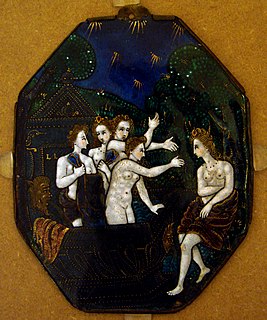
Leonard Limousin was a French painter, the most famous of a family of seven Limoges enamel painters, the son of a Limoges innkeeper.

Jean-Baptiste-Joseph Duchesne was a French painter and miniaturist.
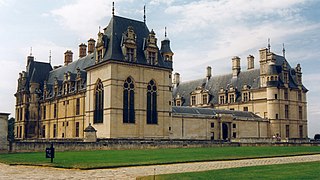
The Château d'Écouen is an historic château in the commune of Écouen, some 20 km north of Paris, France, and a notable example of French Renaissance architecture. Since 1975, it has housed the collections of the Musée national de la Renaissance.
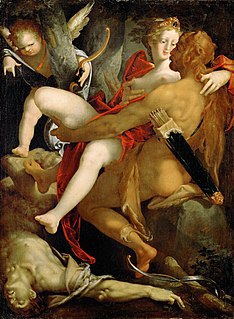
Northern Mannerism is the form of Mannerism found in the visual arts north of the Alps in the 16th and early 17th centuries. Styles largely derived from Italian Mannerism were found in the Netherlands and elsewhere from around the mid-century, especially Mannerist ornament in architecture; this article concentrates on those times and places where Northern Mannerism generated its most original and distinctive work.

Limoges enamel has been produced at Limoges, in south-western France, over several centuries up to the present. There are two periods when it was of European importance. From the 12th century to 1370 there was a large industry producing metal objects decorated in enamel using the champlevé technique, of which most of the survivals, and probably most of the original production, are religious objects such as reliquaries.

Henry Pierce Bone was an English enamel painter.
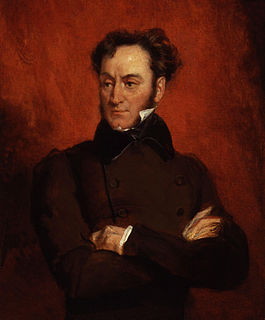
Robert Trewick Bone was an English painter of sacred, classical and genre scenes. He was also an enamel painter.

Louis de Chastillon (c.1639–1734) was a French painter in enamel and miniature, and an engraver.

Abraham Constantin, a Swiss enamel painter, was born at Geneva. He became a pupil of Gérard, after whom he executed many works in enamel and on porcelain, among which may be mentioned, 'Belisarius,' 'Cupid and Psyche,' 'The Entry of Henry IV. into Paris,' and portraits of the King of Rome, Charles X, and the Emperor of Russia. He was attached to the manufactory at Sèvres, and died at Geneva.
Jean de Court used painted Limoges enamel and oil painting, and served as official portrait painter to the monarchs of Scotland and France. The de Court dynasty of enamel painters ran a workshop making Limoges enamel over several generations in Limoges in south-western France.
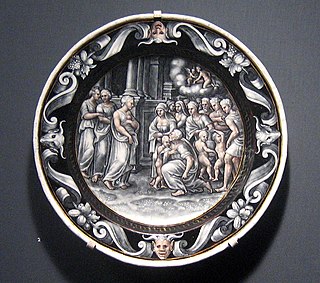
Pierre Courteys was a French enamel painter, working in Limoges.
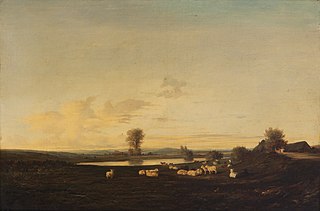
Léon-Victor Dupré, a French landscape painter, was born at Limoges in 1816, and studied under his brother, Jules Dupré. He died in 1879, after a long and painful illness. Amongst his works are:

Paolo De Poli was an Italian enameller and painter.
If we can speak of an Italian art of enamel, it is thanks to De Poli, to the road he opened up and followed faithfully, to the example of his orthodox technique, to his sureness of touch, to the esteem and admiration he has won. And we should to be grateful to him for this also. Gio Ponti

Alexander Fisher, was an English silversmith and painter active in the Arts and Crafts movement in London. He was a teacher at the Slade School of Art and wrote a book about enameling and the article on "Enamel" for the Encyclopædia Britannica. His book, The art of enamelling upon metal: with a short appendix concerning miniature painting on enamel was published in 1909.

Suzanne de Court was an enamel painter in the Limoges workshops, probably running a workshop of some size producing pieces of the highest quality. She was the only identifiable woman signing Limoges pieces, though this may be in her capacity as owner of the workshop; only one other female enamel painter is recorded in the period. None of her work is dated but she is thought to have been active between 1575 and 1625, especially around 1600, and was very possibly the daughter of Jean de Court, from a dynasty of Limoges painters.

The Khalili Collection of Enamels of the World is a private collection of enamel artworks from the period 1700 to 2000, assembled by the British-Iranian scholar, collector and philanthropist Nasser D. Khalili. It is one of the eight Khalili Collections, each of which is considered among the most important in its field.
References
-
 This article incorporates text from a publication now in the public domain : Bryan, Michael (1886). "Court, Jean". In Graves, Robert Edmund (ed.). Bryan's Dictionary of Painters and Engravers (A–K). I (3rd ed.). London: George Bell & Sons.
This article incorporates text from a publication now in the public domain : Bryan, Michael (1886). "Court, Jean". In Graves, Robert Edmund (ed.). Bryan's Dictionary of Painters and Engravers (A–K). I (3rd ed.). London: George Bell & Sons.
| | This article about a French painter is a stub. You can help Wikipedia by expanding it. |